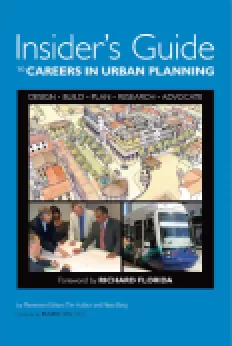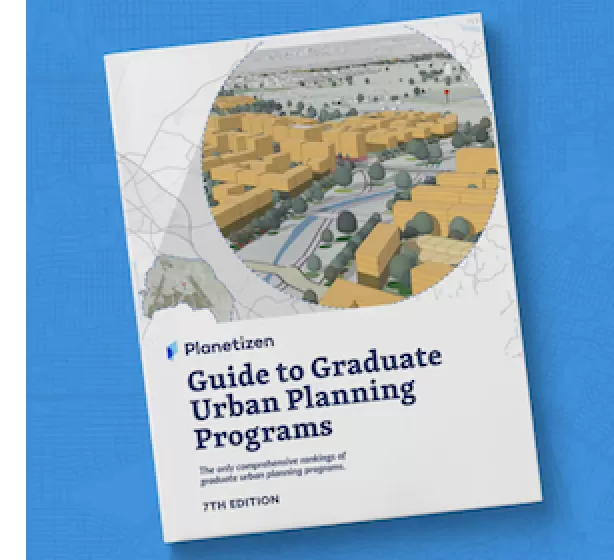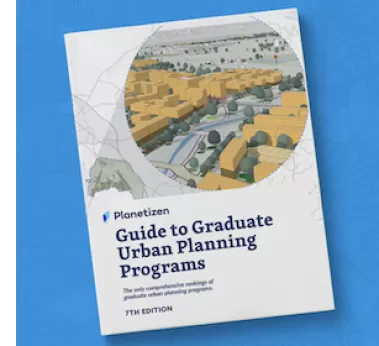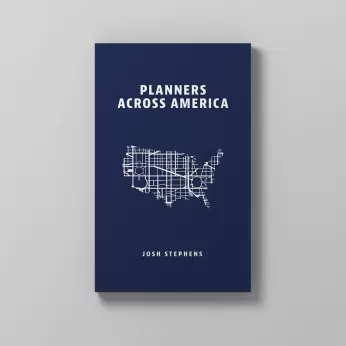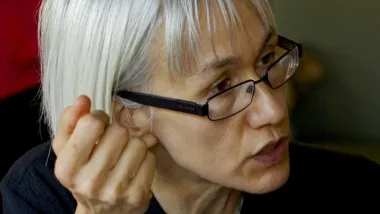With the summer coming to a close new students are making their way to graduate planning programs. For those thinking about applying for 2008 it is time to start preparing. The deadlines can be as early as December, now only a few months away. These tips, based on my experiences on several admissions committees, can help you make sense of the application process. What Admissions Committees Look For Planning schools consider up to six different elements in admissions to masters programs: letters of intent, experience in activities related to planning (paid and volunteer work, internships, and activism), letters of reference, previous grades, GREs, and work samples.
With the summer coming to a close new students are making their way to graduate planning programs. For those thinking about applying for 2008 it is time to start preparing. The deadlines can be as early as December, now only a few months away. These tips, based on my experiences on several admissions committees, can help you make sense of the application process.
What Admissions Committees Look For
Planning schools consider up to six different elements in admissions to masters programs: letters of intent, experience in activities related to planning (paid and volunteer work, internships, and activism), letters of reference, previous grades, GREs, and work samples.
Because planning programs have such different emphases, letters of intent help admissions committees decide if you will fit in their particular program. They want to avoid unhappy students who want to study, say, sustainable design when the program emphasizes economic development. If you can't write a letter of intent that names specific faculty, courses, centers, or concentrations then you might want to reconsider applying to that program.
Planning experience shows knowledge of the field and can demonstrate energy and initiative. It does not need to be paid. Volunteering on the land use committee of your local Sierra Club or helping out at your local preservation alliance both count as experience, particularly if you can demonstrate some specific outcomes. So if you are working in pharmaceutical sales and there's no chance of a planning job, join your neighborhood association or an environmental justice coalition. You'll learn a lot and hopefully make a positive difference as well.
Letters of reference really help committees make merit funding decisions. They can also tip the balance if there's a question about some other part of the file. Remember, that writing a reference takes hours and to craft a really good letter requires multiple interactions-I cannot write a good letter unless a student has had two major sorts of interactions with me (taken at least two classes, or worked a couple of semesters). Pick people who know you well enough to give the admissions committee a strong sense of who you are. Give your letter writers lots of information. Help them as much as you can. Also, let your reference writers know if you get in. Thank them-they did a lot of work.
Grades and GREs matter most for those without much experience. They are less relevant to those who graduated 20 years ago. In addition, even if you have good grades and GREs if you are still in an undergraduate program really consider getting more experience-you might get in to a graduate program straight out of a BA but to get a good funding package you'll typically need to have done more than that.
Work samples are required by some schools and typically only make a difference on the margin at the master's level.
Finding Out About Schools
Of course this assumes that you know where you are going to apply. This requires a bit more work. In the United States, to find the long list of schools go to the web site of the Association of Collegiate Schools of Planning. Accredited programs are listed as are other member non-accredited and affiliated schools. While there are other programs, this is a good first list.
Then to make a short list the first things to do are to read and listen. Read program web sites, read the professional literature, and go to conferences. Take advantage of open houses. You could also look at the campus.
However, in my experience it does not help your chances of admission to visit a school before being admitted. Some schools receive hundreds of applicants. Don't expect faculty to put aside their other tasks to meet or answer detailed email questions before you have been admitted-their priority is students already in the program and doing the work that makes you interested in studying with them.
After one is admitted is the best time to visit as at that stage the program has made the judgment that you fit. The only time this isn't the case is if the web site is really minimal and the faculty have few publications-in those cases they should expect queries and you may really need to visit or email before deciding to apply.
Overall, the application process is fairly straight forward but does require preparation. The challenge is to choose the right programs, something I'll turn to next month.

Planetizen Federal Action Tracker
A weekly monitor of how Trump’s orders and actions are impacting planners and planning in America.

Chicago’s Ghost Rails
Just beneath the surface of the modern city lie the remnants of its expansive early 20th-century streetcar system.

Amtrak Cutting Jobs, Funding to High-Speed Rail
The agency plans to cut 10 percent of its workforce and has confirmed it will not fund new high-speed rail projects.

Ohio Forces Data Centers to Prepay for Power
Utilities are calling on states to hold data center operators responsible for new energy demands to prevent leaving consumers on the hook for their bills.

MARTA CEO Steps Down Amid Citizenship Concerns
MARTA’s board announced Thursday that its chief, who is from Canada, is resigning due to questions about his immigration status.

Silicon Valley ‘Bike Superhighway’ Awarded $14M State Grant
A Caltrans grant brings the 10-mile Central Bikeway project connecting Santa Clara and East San Jose closer to fruition.
Urban Design for Planners 1: Software Tools
This six-course series explores essential urban design concepts using open source software and equips planners with the tools they need to participate fully in the urban design process.
Planning for Universal Design
Learn the tools for implementing Universal Design in planning regulations.
Caltrans
City of Fort Worth
Mpact (founded as Rail~Volution)
City of Camden Redevelopment Agency
City of Astoria
City of Portland
City of Laramie








